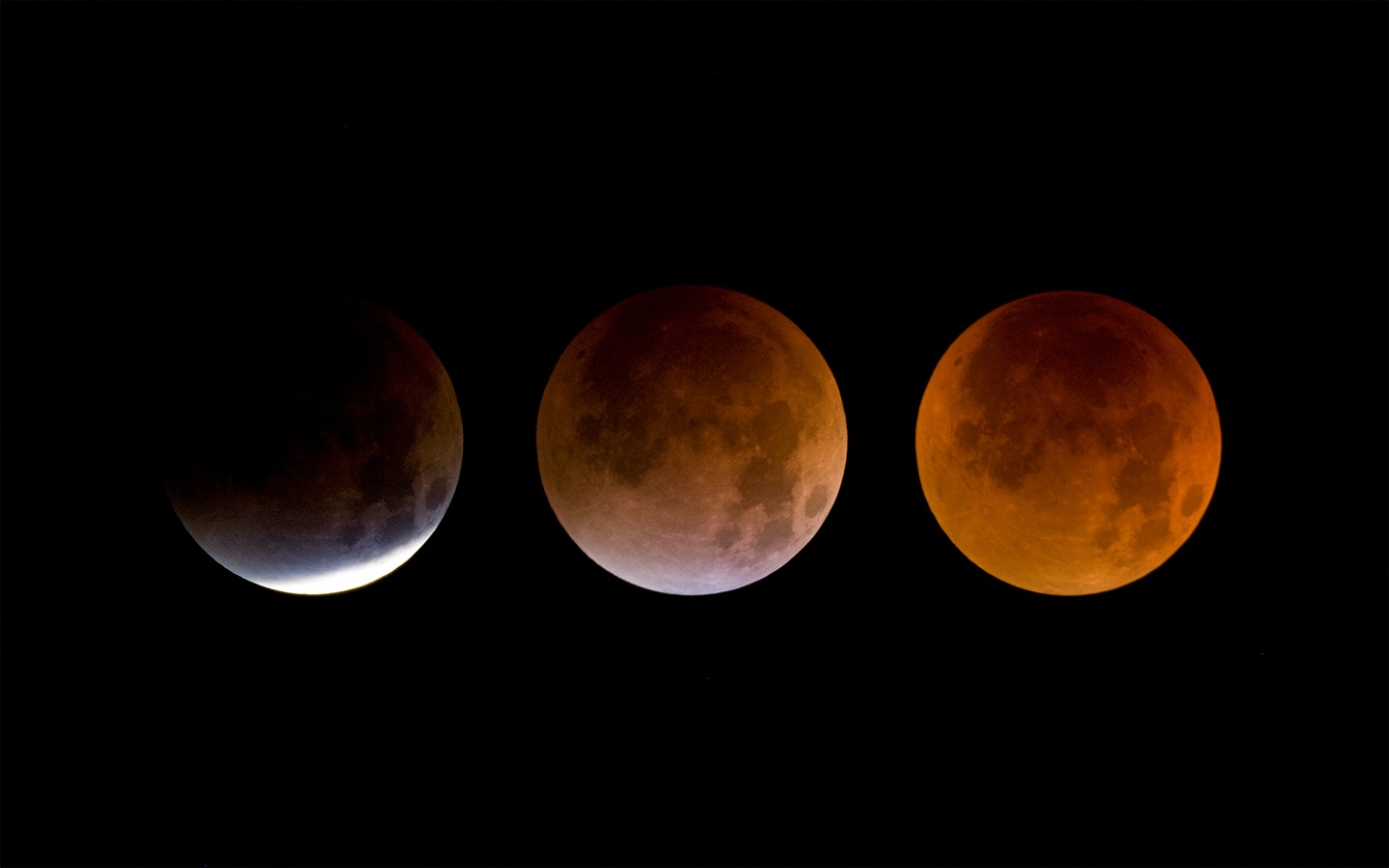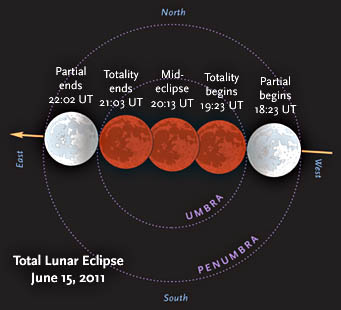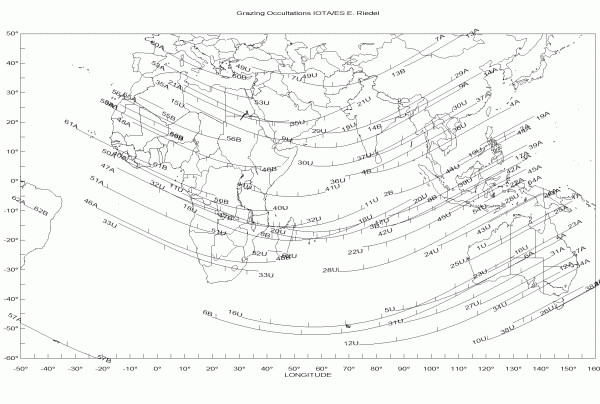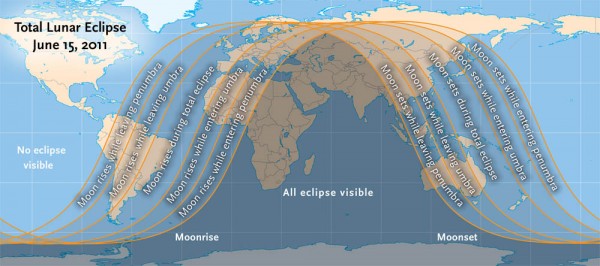Total lunar eclipse on June 15th!

We’re in the midst of an interesting eclipse trifecta. Partial solar eclipses occur during the New Moons on June 1st and July 1st, which are sandwiched around a total lunar eclipse during the Full Moon on June 15th. Those of you in Europe and elsewhere in the Eastern Hemisphere are in for a real treat.
The Moon will plunge deeply into Earth’s shadow, passing almost directly through its center. Consequently, totality lasts a whopping 100 minutes — the longest umbral immersion since July 2000, and nearly 40 minutes longer than the well-observed lunar eclipse last December 21st.

The lunar disk first encroaches into the penumbra, Earth’s partial shadow, at 17:25 Universal Time, but don’t expect to see any dusky shading along its easternmost edge for at least 30 minutes afterward. The first nibble from Earth’s deep umbra comes at 18:23 UT, with the black bite taking a full hour to creep steadily across the disk.
Totality begins at 19:22:30 UT and ends at 21:02:42 UT, with the moment of greatest eclipse at 20:12:37 UT.
The long duration of this event is due in part to Earth being near aphelion in its orbit and the Moon being near perigee in its orbit. Since the lunar disk passes 5.3 arcminutes north of the umbra’s center, observers might see the northern limb appear a little brighter than the southern limb.
In any case, this has the makings of a very dark eclipse. Observers rate totality’s darkness using a five-point scale developed by French astronomer André Danjon, ranging from L = 0 (nearly invisible) to L = 5 (bright copper-red or orange disk).
| Danjon Scale of Brightness | |
| L Value | Description |
| 0 | Very dark eclipse, Moon almost invisible, especially at midtotality. |
| 1 | Dark eclipse, gray or brownish coloration; details distinguishable only with difficulty. |
| 2 | Deep red or rust-colored eclipse, with a very dark central part in the umbra and the outer rim of the umbra relatively bright. |
| 3 | Brick-red eclipse, usually with a bright or yellow rim to the umbra. |
| 4 | Very bright copper-red or orange eclipse, with a bluish, very bright umbral rim. |
The darkened lunar disk makes it very easy to watch the Moon cover up stars along its path. Especially good will be the occultation of 4.8-magnitude 51 Ophiuchi. Perhaps a naked-eye event, it will be spectacular as seen with binoculars or any small telescope.
As the map at right shows, the ringside seats for Wednesday’s event will be centered around 50°E in longitude. This favors eastern Africa (near moonrise), Asia, and western Australia (near moonset). Those of us in Europe will see most everything, though the early stages occur before the Moon rises. Only northern Scotland and Scandinavia miss out — but, then again, they were favored for the partial solar eclipse on June 1st. (Sky&Telescope)
Grazing Occultations during the total lunar eclipse of 2011 June 15
 June 15, 2011 Lunar Eclipse details
June 15, 2011 Lunar Eclipse details
Observing and Photographing Lunar Eclipses
LIVE WEBCASTS:
- AstroNation.net from Hessen, Germany
- AstroViten from Oslo, Norway
- Bareket Observatory from Maccabim, Israel
- Ciclope’s SkyLive.tv from Tenerife (Canary Islands)
- ECA (Eclipse Chasers Athaenium) from Delhi, India
- Eclipse-Live from Hochschule Offenburg, Germany
- Sky Watchers Association of North Bengal from Siliguri, India


Commenting rules and guidelines
We value the thoughts and opinions of our readers and welcome healthy discussions on our website. In order to maintain a respectful and positive community, we ask that all commenters follow these rules:
We reserve the right to remove any comments that violate these rules. By commenting on our website, you agree to abide by these guidelines. Thank you for helping to create a positive and welcoming environment for all.